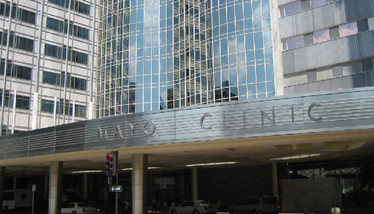News-in-Brief
Converting glial cells to neurons, more effective CAR-Ts, and groundbreaking IDAs… What’s new in the advanced medicine field?
Manufacturing
- The US Center for International Blood and Marrow Transplant Research (CIBMRT) is collaborating with Novartis to track the long-term outcomes of patients treated with CAR-T cell therapies. The alliance will collect and examine real-world data about the use of Kymriah, and is encouraging all US centers to offer patient participation in the registry. “For decades, we collected research data about hematopoietic cell transplantation (HCT),” said Marcelo Pasquini, Senior Scientific Director at CIBMTR in a press release. “Previously, HCT was the only successful cellular therapy for cancer. We look forward to expanding into the field of targeted cellular therapies to help people with cancer.”
- The UK government is investing £4.3 million in an effort to create more efficient and innovative methods for manufacturing medicines. Part of the funding has been awarded to UK gene and cell therapy group, Oxford BioMedica, which is developing a new digital framework initiative to streamline the production of next-generation medicines. In a press release, the group said the project aims to build “digital and robotics capabilities that are designed to drive improvements in analytical methodology, supply times and cost of goods.” The UK government has also invested a further £3 million to support the work of Advanced Therapy Treatment Centres in rolling out new cell and gene therapies across the country’s National Health Service.
Research
- Kymriah (tisagenlecleucel) is priced in line with its estimated long-term survival benefit among children and young adults with relapsed or refractory B-cell acute lymphoblastic leukemia, according to the results of a cost-effectiveness analysis. The international trio of researchers found that – given 40 percent of patients treated with tisagenlecleucel are expected to be long-term survivors, or alive and responding to treatment after 5 years – tisagenlecleucel had a total discounted cost of $667,000, with discounted life-years gained of 10.34 years and 9.28 QALYs (Quality Adjusted Life Years) gained. The researchers compared these results with the chemotherapy drug, clofarabine, which had a total discounted cost of approximately $337,000, with discounted life-years gained of 2.43 years and 2.10 QALYs gained. This difference resulted in an incremental cost-effectiveness ratio of approximately $42,000 per life-year gained and approximately $46,000 per QALY gained for tisagenlecleucel vs. clofarabine.
- A new gene therapy can convert glial cells into functioning neurons. Gong Chen, Professor and Verne M. Willaman Chair in Life Sciences at Penn State University, presented the findings at the annual meeting of the Society for Neuroscience in San Diego. Chen and his team were able to inject a neural transcription factor called NeuroD1 – a protein that activates neuronal genes and silences glial genes – within injured parts of the brain to infect glial cells. NeuroD1 then binds with the glial cell’s DNA and activates the neuron genes, turning the glial cell into a functioning neuron. The team hope that the technology may be used to treat neurological disorders, such as stroke, Alzheimer’s disease and Parkinson’s disease.
- A new strategy to reduce the severe toxicities associated with CAR-T cell therapy? Researchers from the Mayo clinic said that by blocking the GM-CSF protein, which is produced by CAR-T cells and other cells using a clinical-grade antibody (lenzilumab), they can reduce toxicities in preclinical models. Presenting the results of their research at the 2018 annual meeting of the American Society of Hematology, the researchers said that they were able to use CRISPR to generate CAR-T cells that did not secrete the GM-CSF protein. Rosalie Sterner, a student working in the T Cell Engineering Laboratory of Saad Kenderian, said in a press release that the modified CAR-T cells were more effective than regular CAR-T cells.

Regulation
- The Biotechnology Innovation Organization (BIO) has called for flexibility in the design of gene therapy clinical trials following the publication of the FDA’s Gene Therapy Draft Guidances. BIO said that the FDA should not “use otherwise limiting language such as those recommending specific number of treatment arms, utilizing different doses but the same product administration procedures, or the inclusion of a sham control group. Use of innovative clinical trial design can decrease unnecessary and unethical patient exposure to clinical procedures and experimental products while still advancing clinical development.” BIO also questioned the scope of the draft CMC guidance and said some recommendations are unclear as to which stage of development they apply.
- The FDA has accepted Editas’ Investigational New Drug (IND) application for their first gene-editing trial in 10-20 patients suffering from an inherited retinal degenerative disease called Leber Congenital Amaurosis type 10. Editas also collected a $25-million milestone payment from its partner Allergan. EDIT-101 is slated to be the first in-vivo CRISPR treatment tested in humans – Vertex and CRISPR’s beta thalassemia treatment involves gene editing outside the body. The news comes six months after Editas suffered a manufacturing set back with one of its input materials failing a quality specification, after which the FDA delayed the IND approval.
- In more IND news, the first induced pluripotent stem cell (iPSC)-derived product has been cleared for clinical investigation by the FDA. Fate Therapeutics announced the news at the 60th American Society of Hematology Annual meeting, along with new preclinical data on the company’s (iPSC) product platform and its iPSC-derived, off-the-shelf cell-based cancer immunotherapy pipeline.

Over the course of my Biomedical Sciences degree it dawned on me that my goal of becoming a scientist didn’t quite mesh with my lack of affinity for lab work. Thinking on my decision to pursue biology rather than English at age 15 – despite an aptitude for the latter – I realized that science writing was a way to combine what I loved with what I was good at.
From there I set out to gather as much freelancing experience as I could, spending 2 years developing scientific content for International Innovation, before completing an MSc in Science Communication. After gaining invaluable experience in supporting the communications efforts of CERN and IN-PART, I joined Texere – where I am focused on producing consistently engaging, cutting-edge and innovative content for our specialist audiences around the world.



















